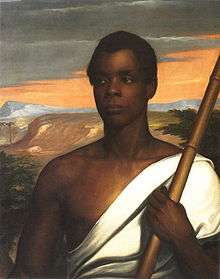Nathaniel Jocelyn

Nathaniel Jocelyn (January 31, 1796 - January 13, 1881) was an American painter.
He was born in New Haven, Connecticut, the son of a clockmaker and engraver. He trained as a watchmaker, later taking up drawing, engraving, and oil painting. He studied engraving with George Munger around 1813; they published at least one print together under the name Jocelin & Munger.
From 1820 to 1822 he was in Savannah, Georgia, and established himself as a portrait painter on his return to New Haven. He had a portrait studio in New York City from 1843 to 1847. His New Haven studio burned in 1849, and he gave up painting for engraving, initially with the firm of Toppan, Carpenter & Co. He went on to found the National Bank Note Engraving Company. After Trumbull, he is represented by more portraits in the Yale collection than any other artist. In 1827 he was elected into the National Academy of Design as an Associate member, and became a full Academician in 1846.
He painted portraits of Joseph Cinqué and of the abolitionist William Lloyd Garrison. Garrison declared that Jocelyn's portrait was a "tolerable likeness," but remarked that "those who imagine that I am a monster, on seeing it will... deny its accuracy, seeing no horns about the head."[1]
Jocelyn retired in 1864 and died at New Haven.
References
Sources
- (English) Garrison Portrait
- Groce & Wallace, The New York Historical Society's Dictionary of Artists in America
- Peter Falk, Who Was Who in American Art